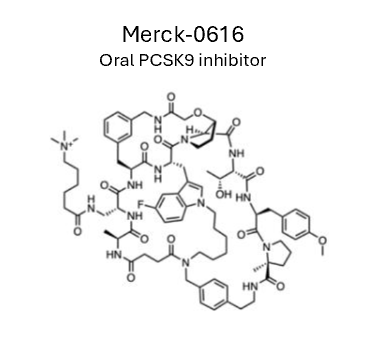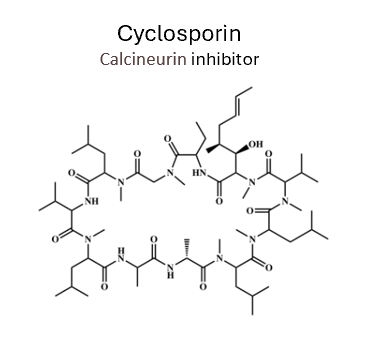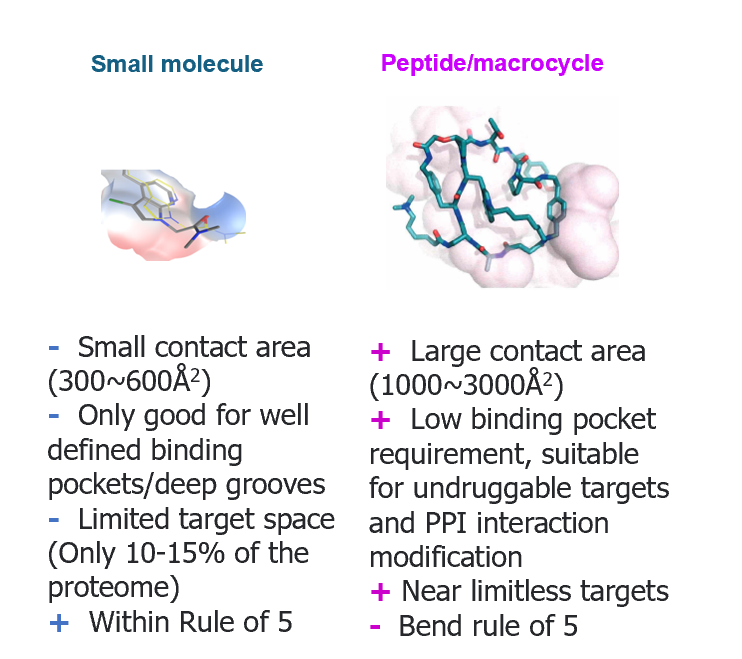The use of mRNA display to select high-affinity protein-binding peptides
Leveraging our proprietary mRNA display libraries, we effectively generate ultra-diverse peptide libraries with over trillions of variations. Our meticulous workflow enables us to identify potent and selective peptide candidates efficiently. Aided by streamlined downstream services, we help overcome early drug discovery challenges, facilitating the development of diverse therapeutic molecules such as peptides, macrocycles, radioligand therapies, antibodies, and their derivatives like PDC, ADC, CAR-T therapies, peptidomimetic, etc. ultimately addressing critical unmet medical needs worldwide.
Insights from the Research
- What are peptide based drugs?
- Why peptide binders?
- What is mRNA display?
- Why mRNA display is the top choice to find peptide binder?
- Key steps of mRNA display
- Key applications of mRNA display
What are peptide based drugs?
The global peptide drug market exceeded $50 billion in 2022 and is projected to grow at a compound annual growth rate of 9% to reach $100 billion by 2030. Breakthroughs in peptide drug discovery, development, and manufacturing, such as display technologies, overcoming renal clearance, solid-phase synthesis, are the basis for flourishing peptide market. Traditional peptides are peptide chains consisting of 2 to 50 amino acid residues linked together by peptide bonds. Currently peptide drugs are presented in various forms, showcasing diverse and remarkable biological functions.






What peptide binder?
Underlining the modulatory effect of peptide drugs is the effective binding of peptide ligand to its target. Currently, peptide drugs, with their unique advantages compared to small molecules and large molecules (size, target suitability, membrane permeability, pharmacokinetics, etc.), present a versatile and promising avenue for drug development.
A few important features listed below. Figure 1: Peptides fall in between in terms of molecular size, which leads to the combining some of the advantageous properties of both. Figure 2: Peptides have a broader range of applicable targets comparing to small molecules. Figure 3: Compared to biologics, peptides have potential to achieve passive permeability across membranes.
Figure 1

DOI: 10.3389/fddsv.2023.1201419
Figure 2

Figure 3

What is mRNA display?
mRNA display technology emerged after yeast display, phage display, and ribosome display, sequentially. The term "mRNA display" stems from the technique's fundamental process (for process please refer the "key steps of mRNA display " below), indicating that the resulting screening library consists of an array of mRNA-peptide fusion molecules, where mRNA molecules (genotypes) are physically linked to their corresponding peptides(phenotypes), forming mRNA-peptide complexes. This composition facilitates the exploration of peptide functions, such as identifying high-affinity binders, and allows for easy retrieval of genotypes of hits, enabling multiple enrichment rounds. The innovative design of this display technology and the compact linkage of mRNA-peptide complexes offer exceptional library diversity, assay fidelity, and adaptability to diverse conditions.
Why mRNA display is the top choice for binder identification?
High hit-finding success rates
Enhanced specificity, sensitivity, and accuracy
Improved drug-like properties
Diverse selection conditions
Mature technology, clinically proved hit finding method
Three out of the above peptide-based drugs originated from mRNA display hits

Key steps of mRNA display

Key application of mRNA display.


